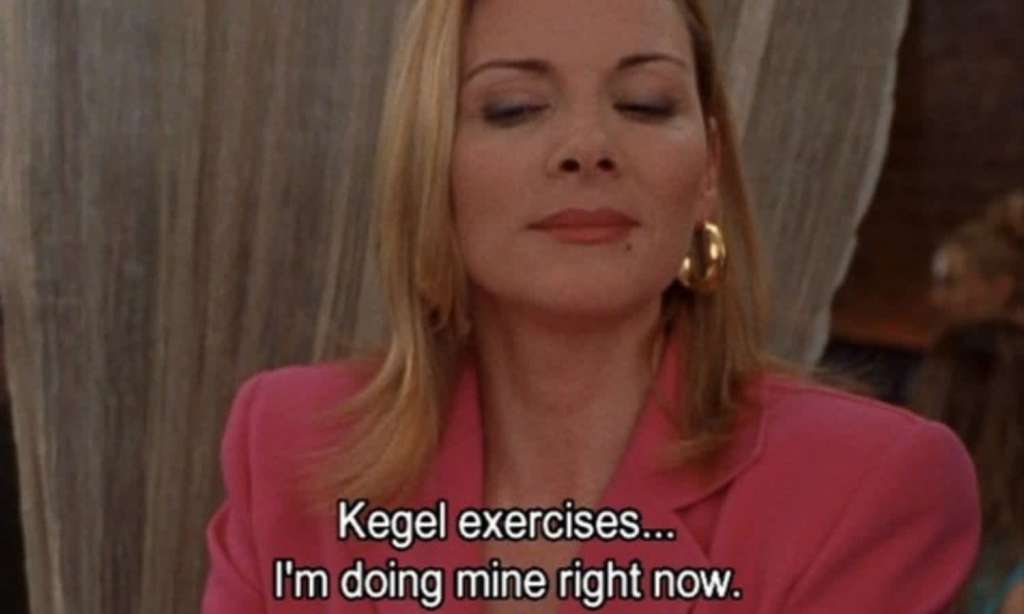Where were you when you first learnt about Kegel exercises and why was it from hearing Kim Cattrall as Samantha Jones discuss them in Sex & The City? You know, the one where they discuss vagina weights and pelvic floor muscles…
Kate Kraschnefski, head of training at the Australian Institute of Fitness, told The Latch that “The pelvic floor is a complex of both superficial and deep muscles in the pelvic region.” And the reason they’re so important? “They contribute to sexual function, bladder and bowel control & providing support to pelvic organs.”
Well, we’re not sure if she’s a SATC fan or if she learnt about Kegels through the show, but Kraschnefski has got you sorted on all things pelvic floor muscles — more than Samantha Jones ever could (sorry, Sam!)
How do I exercise my pelvic floor? What effect does this have on the rest of my body?
It all depends on the health of your pelvic floor to start with. According to Kraschnefski, it can be challenging to properly activate a pelvic floor contraction, without relying on the surrounding muscles, such as “the glutes and the abdominals”.
The pelvic floor contraction itself – also known as the Kegel – is a nuanced move, “involving both a squeeze and lift”. Yep, you know the one. Kraschnefski told us that, depend on the action required by the muscles, “The contraction needs to be sustained at rest as well as quickly activated with power and strength.”
In terms of a pelvic floor exercise routine, “Practicing a contraction for 10 seconds 10 times a day is a good routine to establish.” In addition to this, you’ll manage to exercise your pelvic floor through normal physical activity, “as long as good form and technique are maintained,” Kraschnefski advised.
If you have a “less than ideal pelvic floor connection,” you may need more specialised training to isolate the right muscles. Kraschnefski suggested to “check with your doctor or a physiotherapist,” who can then take you through some simple testing protocols, as well as recommend exercises specific to your needs.
I’m giving birth soon, is it possible to train my pelvic floor for that?
“Absolutely,” reassured Kraschnefski. “A strong pelvic floor will help the body cope as a baby grows and places more demand on the muscles, and potentially assist with easing your child out during labour.”
Not only this, but “healthy muscles will have a greater chance of healing efficiently” and it reduces the risk of stress incontinence.
What about after giving birth? How do I take care of my pelvic floor then?
Kraschnefski stressed that it’s crucial to consult your doctor or midwife before starting any postnatal exercise program, “as every pregnancy is different”.
That being said, “gentle exercise can benefit most people”. She recommended beginning to connect with your pelvic floor via gentle, slow, sustained contractions, as well as short and quick repetitions. “This can be beneficial to the healing process,” she said. The advice is to build up to five to six sets of five to 10 repetitions each, per day.
Are there any other exercises I can do to support my pelvic floor?
“Exercises like Pilates,” recommended Kraschnefski, as they “place an emphasis on core control, [that] can be particularly effective”.
Will stress have an effect on my pelvic floor?
Stress can cause us to be overly tight through our muscles, and “A hypertonic pelvic floor can lead to constipation, discomfort and impact sexual function.”
What does Kraschnefski suggest? “Self-care and relaxation. Committing to regular mindfulness practice, such as breathwork and meditation, can assist in these cases.”







